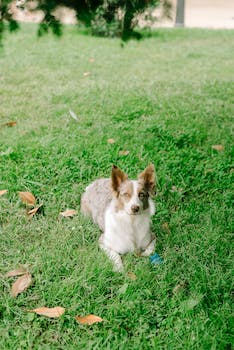Hey there pet lovers! As someone who has always had furry friends in my life, I know how important it is to create a safe environment for our beloved pets. Whether you have a mischievous kitten or an adventurous pup, pet-proofing your home is essential to keep them out of harm’s way. So, let’s dive into some essential tips to ensure a pet-safe environment in your home!
Identify Potential Hazards
The first step in pet-proofing your home is to identify any potential hazards that could pose a danger to your furry friend. Take a walk around your house and keep an eye out for any small objects that your pet could swallow, toxic substances that may be within their reach, or any loose cords or wires that could be chewed on. It’s also important to secure any breakable items or valuable possessions that your pet may knock over or damage while exploring.
Secure Doors and Windows

Pets, especially curious cats and energetic dogs, tend to be experts at finding their way out of the house. To prevent any escape attempts, make sure all doors and windows are securely closed and locked. Consider installing pet-proof screens on your windows to allow fresh air in without the risk of your pet pushing through. Additionally, if you have a fenced yard, regularly inspect it for any holes or gaps that your pet could squeeze through.
Hide Electrical Cords
Electrical cords can be incredibly tempting for pets to chew on, posing a serious risk of electric shock. To prevent any accidents, make sure to secure and hide all electrical cords that are within your pet’s reach. You can use cord covers or secure them to the wall with clips or tape to keep them out of sight and out of your pet’s mouth. Alternatively, you can consider using cordless appliances or investing in pet-friendly cord protectors.
Choose Pet-Friendly Plants
While plants can add beauty and freshness to our homes, certain plants can be toxic to pets if ingested. Before bringing any new plants into your home, make sure to research if they are safe for your furry friends. Some common plants that are toxic to pets include lilies, aloe vera, and certain types of ferns. Opt for pet-friendly plants such as spider plants, Boston ferns, or African violets that can brighten up your space without posing any harm to your pet.
Provide Safe Zones
Creating designated safe zones within your home is important, especially if you have a multi-pet household or need to separate your pet from certain areas. These safe zones can be created using baby gates or pet gates to prevent your pet from accessing certain rooms or areas where they may be at risk. It’s also a good idea to provide your pet with a cozy, comfortable space of their own, complete with their bed, toys, and water bowl, where they can retreat and relax.
Conclusion
By following these essential tips for pet-proofing your home, you can create a safe and secure environment for your furry friend to thrive in. Remember, prevention is key when it comes to pet safety, so always stay one step ahead and be proactive in identifying and eliminating any potential hazards. With a pet-proofed home, you can enjoy peace of mind knowing that your beloved companion is protected from harm.